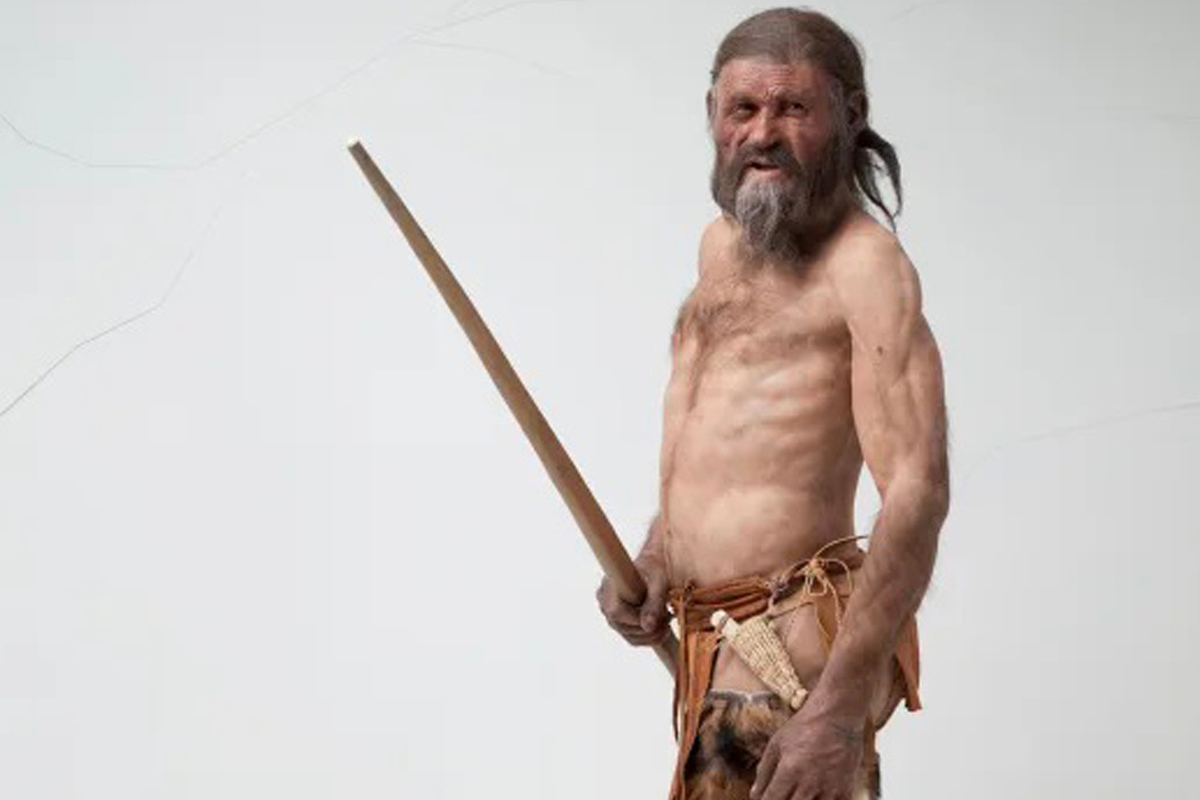Geneticists have restored the appearance of the Iceman mummy
[ad_1]

The mystery of his violent death, who he was and how he ended up on a mountain pass, has aroused interest far beyond the field of archeology. Every year, thousands of people visit his mummified remains, kept in a special cold room at the Archaeological Museum of South Tyrol in Bolzano (Italy), says CNN.
A new study of ancient DNA recovered from Ötzi’s pelvis suggests he still has some secrets he must give up. An analysis of its genetic makeup showed that the 5,300-year-old mummy had dark skin and dark eyes – and was likely bald. This contrasts with Ötzi’s reconstruction, which shows a pale-skinned man with thick hair and a beard.
“It was previously thought that his skin darkened during the mummification process,” says Albert Zink, head of the Eurac Research Mummy Research Institute, a private research center based in Bolzano.
“It looks like the mummy’s dark skin color is pretty close to Iceman’s skin color when alive,” continues Zink, who co-authored the study, published Wednesday in the scientific journal Cell Genomics.
Not surprisingly, Ötzi was dark-skinned, Albert Zink noted, pointing out that many Europeans at the time probably had darker skin pigmentation than many modern Europeans.
“Early European peasants still had rather dark skin, which eventually changed to lighter skin as an adaptation to changes in climate and farmers’ diets. Farmers consume much less vitamin D in their diets compared to hunter-gatherers, he explained. “It appears that the Iceman still consumed quite a lot of meat, which was also confirmed by our analysis of his stomach, which showed the presence of mountain goat and deer meat.”
Albert Zink’s co-author Johannes Krause, director of the department of archaeogenetics at the Max Planck Institute for Evolutionary Anthropology in Leipzig, Germany, said the results suggest Iceman looked much more like the mummy itself in life.
“It is remarkable how distorted the reconstruction is by our own preconceived notion of a Stone Age man from Europe,” Krause said in a statement.
Although ancient DNA analysis showed that Ötzi had male-pattern baldness, it’s impossible to be sure to what extent he already lost his hair in life, says archaeologist Lars Holger Piele, co-director of the Ice Secrets project in Norway. He studied Ötzi, but did not take part in the latest research.
“Ötzi could well be bald for genetic reasons, but the near-total baldness that he now has, in my opinion, is more likely due to what happened after his death,” says Pile. “Hair on the skin often falls out while the body is in and out of ice (and sometimes in water) as the epidermis decomposes.”
According to the study, the genome sequenced from DNA taken from Ötzi’s pelvis was more complete than the previous genome, which was pieced together in 2012, when the ancient DNA field was still in its infancy. According to Piele, the latest research is also helping to clear up the mystery of Ötzi’s lineage.
“Applying new methods makes Ötzi a scientific gift that just keeps on giving,” Pile added.
A 2012 study found that his genome contained traces of a steppe people who only arrived in Europe centuries after his death. A new study shows that this early result was likely due to contamination of modern human DNA.
“Advances in sequencing technology have allowed us to create a high coverage iceman genome. This allowed us to get more accurate results,” Zink said.
The genome also seemed to rule out the previously suggested genetic relationship between Ötzi and modern Sardinians.
When researchers in the new study compared Ötzi’s genome with those of other ancient humans, they found that he had more in common with early Anatolian farmers – from what is now Turkey – who had little contact with their European hunter-gatherer contemporaries.
“It doesn’t completely change what we know about Iceman, but it clears up some things,” Zink explained. “This shows that Iceman most likely lived in a relatively isolated area with limited contact with other populations and low gene flow from populations associated with hunter-gatherer ancestors.”
Nearly every detail of Ötzi and his belongings has been analyzed, painting an intimate picture of life 5,300 years ago.
The contents of his stomach gave information about his last meal and where he came from, his weapons showed he was right-handed, and his clothes gave a rare glimpse of what ancient people actually wore. Zinc said the team is looking forward to revealing more details, such as the composition of its microbiome.
According to Piele, this is not the first time that a chapter in Ötzi’s fascinating story has been rewritten.
Ötzi was originally thought to have frozen to death, but a 2001 x-ray revealed an arrowhead in his shoulder, which could have been fatal. He also had a head injury, possibly sustained at the same time, and his right arm shows a defensive wound.
“The whole history of Iceman is intriguing, including the mystery of his violent death – and the question of why he was there, high in the mountains, when he was killed,” states Zink.
[ad_2]
Source link








